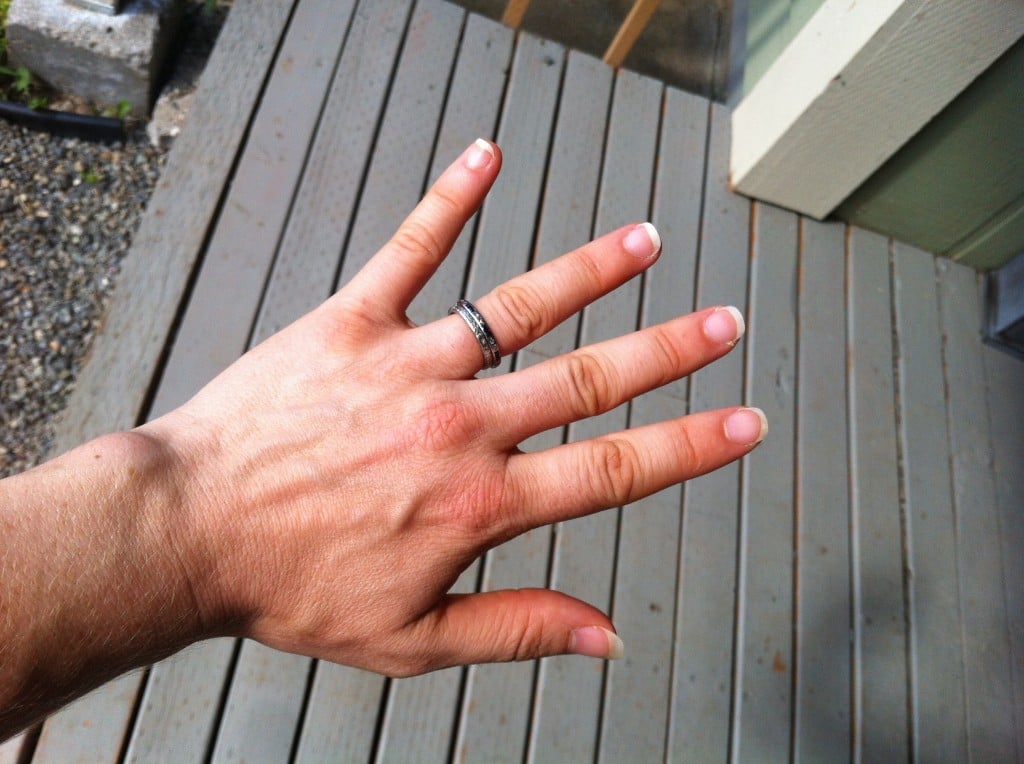[I wrote this piece near the beginning of my blog project, when I was devoted to one tradition for a quarter each, and I shifted from practicing all Hinduism all the time to practicing the Feri tradition.*]
A discussion of the ‘left hand paths’ is an appropriate segue between the Hindu and Feri traditions. They might appear radically different, but you might be surprised. I was!
 Like all dualities, the split between left and right hand paths is a bit of a false dichotomy. Each side has elements of the other, but the designations are somewhat useful. Mostly, the left hand paths are associated with the occult and right hand paths with orthodoxy. As I read more deeply about Tantra, which is often considered a left hand path within Hinduism, I discover that it too has its own left and right hand paths. Right hand Tantra is more dualist, more classically Vedic, and less concerned with the siddhis (yogic paranormal powers). In the witchcraft world, Feri is often seen as left hand, with its emphasis on the personal, ecstatic tradition, its relationship with deities often considered (in a Judeo-Christian mindset) diabolical, and its perceived lack of morality. What’s interesting to me is that much of what I read about Tantra sounds like things I’ve encountered in Feri. The two are FAR more in tune with one another than I ever expected.
Like all dualities, the split between left and right hand paths is a bit of a false dichotomy. Each side has elements of the other, but the designations are somewhat useful. Mostly, the left hand paths are associated with the occult and right hand paths with orthodoxy. As I read more deeply about Tantra, which is often considered a left hand path within Hinduism, I discover that it too has its own left and right hand paths. Right hand Tantra is more dualist, more classically Vedic, and less concerned with the siddhis (yogic paranormal powers). In the witchcraft world, Feri is often seen as left hand, with its emphasis on the personal, ecstatic tradition, its relationship with deities often considered (in a Judeo-Christian mindset) diabolical, and its perceived lack of morality. What’s interesting to me is that much of what I read about Tantra sounds like things I’ve encountered in Feri. The two are FAR more in tune with one another than I ever expected.
Both Tantra and Feri are highly mystical, relying on one’s personal experience with Gods/God/Deity (pick your term). Trance, entheogens, meditation, chanting: all of these are ways used to obtain connection with the Spirits. The ultimate goal of Tantra is divine union. Feri embraces an autonomy of personal space and power, while also acknowledging that all comes from the ultimate Source, the Star Goddess, and eventually returns to Her as well. Both traditions embrace the body. Our physical existence is not something from which to flee or ‘ascend’ but a gift on our journey; it is a tool. Immanence is taken seriously.
The concept of guru or teacher, as well as lineage, is important to both traditions. Both consider themselves conduits of a powerful current, which is passed through physical transmission upon initiation. While anyone may prepare themselves for the current by practicing certain techniques and opening oneself up to the Gods, if one’s physical and psychic containers are not strong, great harm can come to the dabbler – but also to the initiate who isn’t fully prepared (I have personally seen this to be true). This is why initiations are not frequent or easy. Concepts of rigorous purification and radical transformation are foundational to both traditions, although their methods and reasoning can be very different. Because of these things, having a trusted guide (teacher or guru) is crucial.
Both traditions prefer to be secretive. Partially this is because they perceive their work as not for the many, but for the few, given their demanding qualities and the possible risks. However, both traditions struggle with remaining private and growing more publicly. On one hand they have much to offer, on the other hand there are risks – not just to would be practitioners, but to the intimate nature of the traditions themselves. Secrecy is also important because within their wider traditions – Hinduism and Neo- paganism– Tantra and Feri stand on the margins. And within a Judeo-Christian milieu, the Hindu and Neo-pagan traditions are already on the fringes. Personal safety can be a legitimate concern.
Because of this last point of secrecy, I harbor some qualms about speaking publicly about Feri. However, because I am not an initiate I will not be revealing anything that isn’t already publicly available in some capacity. I ask the Feri ‘elders’ to give me a heads up if I stray into problematic areas.
I anticipate some bleeding over of Tantric practices into my work with Feri. It seems fitting and structurally sound.
On a personal note, I amused with my fascination with left hand paths. It’s about as ‘rock star’ as I get. The occult, the gothic, the left hand – I love these things at their philosophical and applied best. Occasionally I love their aesthetics too, but unfortunately that often seems tipped more toward the Hot Topic side of things, and well…. I’m a jeans and t-shirt kinda gal. On the surface I’m pretty heteronormative on the surface, middle class and average – not a bad thing! Just not particularly ‘freaky.’ But dig deeper and you’ll find a blackening heart beating in my chest.
*A note about my use of Wikipedia sources. I intend these as an easy place for more information. Wikipedia is never the full story, but rather a good place to get the information one needs for further learning.















